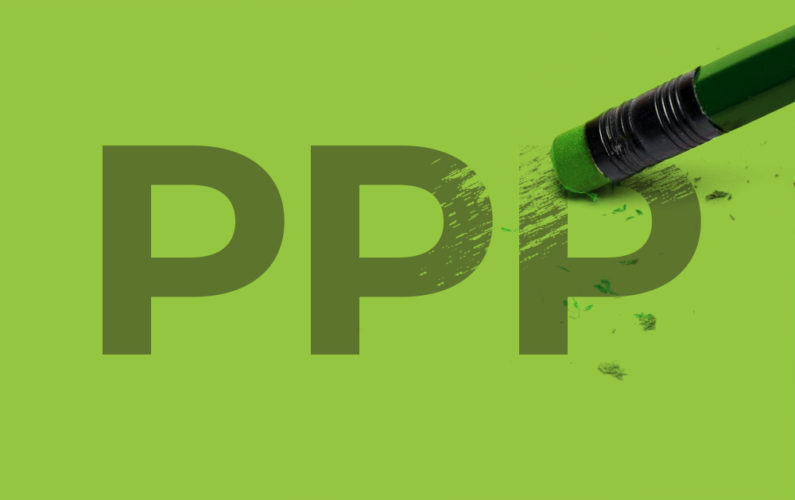Big Changes to PPP Loan Forgiveness Rules

Newly passed legislation is heading to President Trump’s desk that will substantially alter the original forgiveness terms for PPP loans.
In what amounts to an admission that the original forgiveness terms were too narrow, the US Senate approved the House version of the Paycheck Protection Flexibility Act Wednesday evening, June 3rd. The bill will make its way to President Trump’s desk, where he is expected to sign it into law.
The new legislation greatly expands the terms under which a PPP loan can be forgiven. Under the original PPP law, loans received by businesses could be forgiven, essentially turning into a grant, if they were used up within 8 weeks of receipt of the funds, and at least 75% going to payroll costs and no more than 25% going toward overhead such as rent, utilities, and loan interest.
The new rules are as follows:
- The period during which the funds must be expensed has been increased from 8 weeks to 24 weeks, not to extend beyond December 31, 2020.
- Now, payroll expenses only have to be a minimum of 60% of the funds usage, down from 75%. While this certainly helps, there is a point of confusion. Originally, spending less than 75% on payroll would require the unused amount to be treated as a loan. The new rule says that if below 60%, it ALL becomes a loan. This is a point that will likely be addressed in another technical tweak, according to Senators Marco Rubio and Susan Collins.
- The full 24-week period can be used to restore workforce levels.
- 2 new exceptions have been introduced, as well. If an employer does not fully restore their workforce or reopen operations due to legitimate COVID-19 related reasons, they will still be able to achieve loan forgiveness.
- The payback period, should any portion of the loan actually be repayable, has been extended from two years to five years, if both lender and borrower agree.
These changes have been anticipated, and will no doubt be cheered by many businesses who participated in the PPP loan program, but were struggling to meet the expenditure and timing requirements. Just the portion of the new legislation that triples the expenditure time window will provide much relief these companies and nonprofits.
who subscribe to our free, email newsletter. It’s information that will empower your nonprofit!
Comments (6)
Comments are closed.

The original PPP loan guidelines mandated that 75% of any forgiven amount had to be spent on payroll costs.5 The Flexibility Act reduces required payroll expenditures to 60% of the loan amount with up to 40% of the loan amount used for mortgage interest, rent, or utility payments to obtain full loan forgiveness of that amount. Or, part of the loan can be forgiven provided the borrower maintains the same 60/40 ratio for the amount forgiven. This change reflects complaints from many businesses that their payroll costs went down as employees were laid off but fixed costs like rent did not. Borrowers can now use the new 24-week period to restore their workforce to pre-COVID-19 levels in order to obtain full forgiveness. The new deadline to achieve this is Dec. 31, 2020 vs. the previous deadline of June 30, 2020.
Prior to enactment of the PPP Flexibility Act, a PPP borrower was required to utilize at least 75% of the PPP loan proceeds it used towards “payroll costs” (as such term is defined in the CARES Act). The PPP Flexibility Act has relaxed this requirement by reducing the minimum percentage to 60%. The Act also states, whether intentional or not, that in order to be eligible for any forgiveness, a PPP borrower must spend at least 60% of its total PPP loan proceeds towards “payroll costs”. The Joint Statement and Seventeenth Interim Final Rule, however, has clarified that the SBA interprets the 60% requirement as a proportional limit on eligible nonpayroll costs as a share of the borrower’s loan forgiveness amount, rather than as a threshold for receiving any loan forgiveness. The Joint Statement and Seventeenth Interim Final Rule states that if a PPP borrower uses less than 60% of the loan amount for payroll costs during the forgiveness period, the PPP borrower will continue to be eligible for partial loan forgiveness, subject to at least 60% of the loan forgiveness amount having been used for payroll costs.
If I understand you correctly, we can use the funds for payroll past the originally required 8 week period?
Correct, Thomas.
It is a great opportunity and lends more time to the business to be successful with the utilization of the funds. It also extends the time frame to keep and pay staff members. Is it possible a portion of the funds could be utilized for start up funds at the present?
No, the usage restrictions have pretty much stayed the same (payroll, benefits, rent, utilities, interest, etc.), but the percentages have been more balanced out. Funds used for startup costs that are not specifically allowed categories would result in those funds being “unforgiven” and repayable under the loan terms.